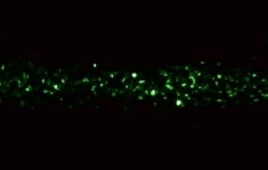One of my favorite movies is Apollo 13. This movie details the events that led to the successful return of our astronauts after a crippling explosion damaged the spacecraft’s Service Module two days after launch. For me, the best parts of the movie were about how the NASA astronauts and Mission Control personnel “worked the problem” to bring the astronauts home. Flight Director Gene Kranz is widely viewed as the originator of the phrase “work the problem.” The movie brilliantly showed how those engineers and scientists explored various engineering challenges and how they managed and solved those challenges.
Many people have viewed that mission as a failure. I, however, agree with the opinion attributed to Commander James Lovell, that the Apollo 13 mission is one of NASA’s greatest successes. They may not have landed on the Moon, the original mission goal, however, they did spotlight one of the finest attributes of engineers: the ability to think critically especially when parameters suddenly change. Unexpectedly, NASA engineers and scientists had to deal with a challenge they had not planned on. The fact that they rose to this challenge, given all of its constraints, is the real measure of “success.”
As engineers, we would do well to remove the word “failure” from our vocabulary. Failure is an emotionally laden word that hampers the ability to “work the problem.” It’s an artificial, illusionary constraint that is not part of the problem or challenge.
Success and failure must always be viewed through the lens of perspective. Here’s an appropriate perspective – engineers don’t fail; they produce results. The results may not be what was expected, but even that is information. Each and every test, design model, or experiment provides data – data that are useful to the next iteration of the design process; to the next step in “working the problem.”
When viewed from this perspective, the concept of failure never enters the picture.
The designs, tests, and experiments that did not go as “planned” are invaluable resources of information for you and your fellow engineers. We don’t often find articles on what went “wrong,” but when we do find them, we all read them because we want to understand “Why?”
Consider the fact that those experiences are the ones that have helped make you the engineer you are today. I would like to encourage you to talk or write about those experiences. What did you learn? Where did it take you? What insights did you gain?
These experiences belong to the category of continuing education, which is part of the editorial mission of this magazine. The editors of Design World would like to encourage you to tell us about some of your experiences, especially the ones that did not go as planned. In doing so, you are contributing to the knowledge bank of our engineering community.
:: Design World ::
Filed Under: Commentaries • insights • Technical thinking





Tell Us What You Think!